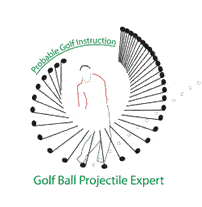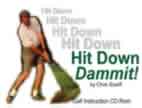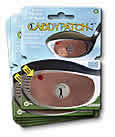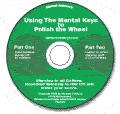
![]() Click here to see
Click here to see
Ken Tannar, PGI Creator
Golf Contents
·Privacy
Policy
·Secure Server
·Home
Instruction-Tips
Putting
·Putting
Handicap Analysis
·Reading
Greens
·Downhill/Uphill
·Stimpmeter
·Putting
Alignment
·BreakMaster
Reader New
·Sun's
UV Index New
Club
Selection
·Golf
Club Distances
·Uphill/Downhill
Shots
·Adjusting
for Wind
Mental
Golf
·Golf
Solutions Book
Personally
Engraved Ball Markers!
Pro Shop
·Great
Golf Gifts
·Golf
Tips-Product Order
·Reading
Putts
·Wind
Effects
·Shot
Patterns
·Elevation
Changes
·Fair
Handicap Analysis ·Tournament
Draws/Groupings
·Order
Golf Bag of Tips
·Teego
Golf Ball Dispenser
·BreakMaster
Reader New
Equipment
Golf
Ball
·Longest
Golf Ball Study
·Distance
Calculator
·Distance,
Spin & Feel New
Golf
Club
·Distance
Technology
·History
of Clubs & Balls
·Online
Golf Equipment
·Golf
Club Distances New
Golf
Swing
·Hit
Down Dammit! CD
·Swing
Machine Book
·Dream
Swing
Golf Science
Science
of Golf
·Golf
Ball Trajectory
·Club
Range Compare
·Golf
Ball Review
·Golf
Science Resources
Weather
Effects
·Temperature
·Humidity
·Wind
·Air
Pressure
Statistics
·Fair
Handicap Analysis
·Handicap
Calculator New
·Shot
Pattern Probablilities
·Free
Report
·Master
Your Game
·Longest
Golf Ball Study
·Hole
Difficulty Calculator
·Tournament
Draws/Groupings
·Putting
Handicap Analysis
Books
Newsletter
Free
Golf Newsletter
·Current
·Archives
Ask the Expert
·Golf
Questions
·Consultation/Litigation
of Errant Golf Balls
·Golf
Course Measuring
·About
Me
·FAQ's
Links
·Golf
WebRing
·Related
Sites
·Old Link Page
·Link
To Us
Would
you like to try some of my unique tips for FREE?
I've taken
a piece of each of my tips and posted it on the Web, so you can view
them right online. Just place your name and email in the box below
and I'll send you a link right now:
Subscribe to the Probable Golf Newsletter
and
"Master Your Own Game"
Try out my new Driver Distance Calculator. Change temperature, clubhead speed, loft, energy and see how far the ball goes.
Get a copy of my latest study. A statistical analysis of over 1600 scores of golfers handicaps 0 - 36.
Graphs and charts display the data.
The scores were used to simulate
over 140 000 matches.
A statistical
analysis of those matches
ensued.
Do the holes on your course have a fair handicap
difficulty ranking? Are there some holes you rarely win? Find
out how to calculate the actual difficulty of your holes. Check
out the
Hole Difficulty Ranking
Calculator .
To develop my model of the flight of a golf ball, I mainly used the treatise of MacDonald and Hanzely7 and the combined coefficients of Bearman and Harvey5 and Smits9. The Smits coefficients apply to a larger range of spins necessary for application to all clubs but are slightly higher in the spin range of the Bearman and Harvey coefficients. Both methods used to determine the coefficients had pros and cons. I used an average of the two different coefficients in my model.
Ball
Speed (ft/s)
|
180
|
200
|
220
|
240
|
260
|
280
|
|
British
ball measured carry (yd)
|
167
|
197
|
227
|
257
|
287
|
317
|
|
My
model's British ball(yd)
|
177
|
207
|
237
|
266
|
296
|
325
|
|
My
model's American ball(yd)
|
174
|
203
|
232
|
261
|
290
|
319
|
Percentage
Difference
|
5.8
|
5.0
|
4.3
|
3.5
|
3.1
|
2.5
|
![]()
Vote For My Site At The Top 100 Golf Sites
©Probable Golf Instruction, Ken Tannar 2001-2006. All Rights Reserved.
601 Capri Road, Enderby, B.C. V0E 1V3 CanadaPhone & FAX: 250-838-7760
probablegolf@yahoo.ca or golfexpert@probablegolfinstruction.com







